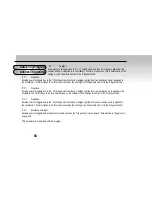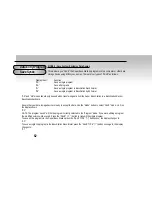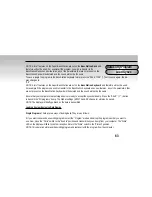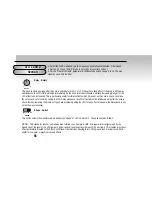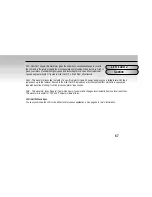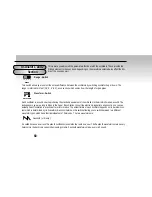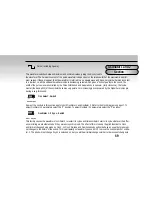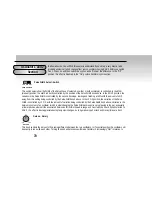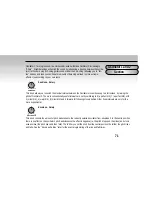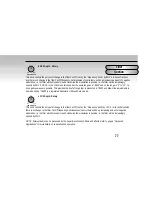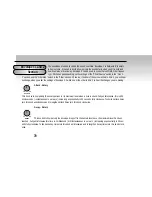
Pulse ( Including Square )
This waveform switches between maximum and minimum values, giving the blocky look to
the waveform. The harmonic content of the pulse waveform is dependent on the relative width of the maximum and mini-
mum values. If these are equal, then the waveform is referred to as a square wave and has a very similar harmonic content
to a clarinet, i.e. all the odd-numbered harmonics in decreasing volume which gives a “hollow” quality to the sound. The
width of the pulse wave is controlled by the Pulse Width knob and modulations in narrower ( fully clockwise ), the funda-
mental (the basic pitch) of the oscillator becomes very quiet and is increasingly over-powered by the higher harmonics pro-
ducing a very thin sound.
Osc Select - Switch
Some of the controls in this section apply to both Oscillator 1 and Oscillator 2. Refer to the block diagram on page 17. To
adjust Oscillator 1’s parameters select the “1” position. To adjust Oscillator 2’s parameters select the “2” position.
Oscillator 1 - 2 Sync - Switch
This facility causes the waveform of oscillator 2 to restart its cycle each time oscillator 1 starts its cycle, whatever the differ-
ence in timing would otherwise be if they were not synchronised. The effect of this is to keep the pitch identical to Osc 1
and timbral changes being made by Osc 2, so Osc 2 De-tune and Semitone knobs will not behave as usual but make radi-
cal changes to the timbre of the sound. This is particularly noticeable if you use ENV 2 to move the nominal pitch of oscilla-
tor. 2. The pitch will not change if sync is switched on, but you will hear timbral changes similar to the resonant changes in
Oscillator 1 and 2
Section
69
1 2
OSC SELECT
OFF ON
OSC 1 - 2 SYNC




